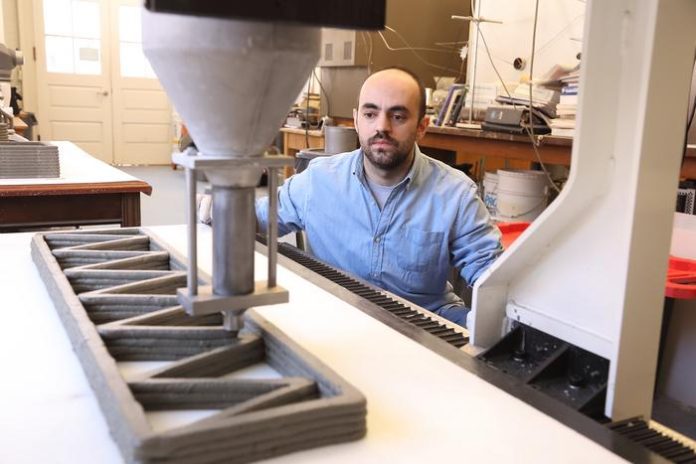Experts at the University of Virginia have pioneered a new 3D concrete printing method that could transform sustainable construction.
A research team led by engineers at the University of Virginia School of Engineering and Applied Science is breaking new ground in 3D concrete printing by exploring the benefits of incorporating cellulose nanofibrils (CNF), an emerging plant-based material.
This innovative study, spearheaded by Osman Ozbulut, a professor in the Department of Civil and Environmental Engineering, aims to enhance the resilience and eco-friendliness of 3D-printed concrete structures.
The integration of cellulose nanofibrils into 3D-printed concrete has shown significant promise. “The improvements we saw on both printability and mechanical measures suggest that incorporating cellulose nanofibrils in commercial printable materials could lead to more resilient and eco-friendly construction practices sooner rather than later,” said Ozbulut.
Advantages of 3D-printed concrete structures
3D-printed concrete structures are gaining popularity in the construction industry due to their numerous benefits.
These structures offer quick and precise construction, potential use of recycled materials, reduced labour costs, and minimal waste, all while allowing for intricate designs that traditional construction methods struggle to achieve.
The process involves using a specialised printer that dispenses a cement-like mixture layer by layer to build structures based on computer-aided design software.
However, the current options for printable materials are limited, and questions about their sustainability and durability remain.
“We’re dealing with contradictory objectives,” Ozbulut explained. “The mixture has to flow well for smooth fabrication but harden into a stable material with critical properties, such as good mechanical strength, interlayer bonding, and low thermal conductivity.”
Balancing flow and strength
Cellulose nanofibrils, derived from wood pulp, present a renewable and low-impact material option.
Known in the industry as CNF, this material shows strong potential as an additive to improve the rheology (flow properties) and mechanical strength of concrete composites.
Research findings and implications
Before this study, the impact of CNF on conventional 3D-printed composites was unclear.
Ozbulut’s team conducted meticulous experiments to understand this influence better.
“Today, a lot of trial and error goes into designing mixtures,” he said. “We’re addressing the need for more good science to better understand the effects of different additives to improve the performance of 3D-printed structures.”
The research revealed that adding at least 0.3% CNF significantly improved the flow performance of the concrete mixture.
Microscopic analysis of the hardened samples demonstrated better material bonding and structural integrity.
Further testing in Ozbulut’s lab showed that CNF-enhanced 3D-printed components exhibited improved resistance to pulling, bending, and compression.
This groundbreaking research paves the way for more resilient and sustainable construction practices using 3D concrete printing.
By incorporating renewable materials like cellulose nanofibrils, the construction industry can move towards eco-friendly solutions that do not compromise performance.
As the demand for innovative and sustainable building methods grows, the findings from the University of Virginia’s study highlight a promising path forward for the future of construction.





